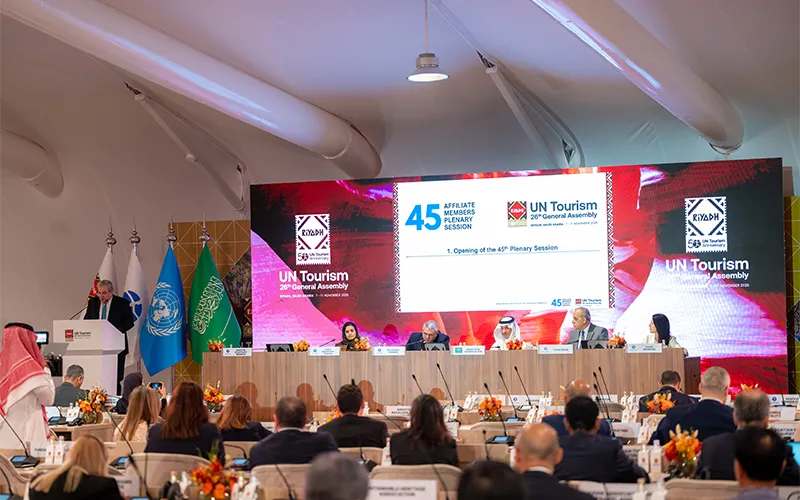Shanghai metals rise after China vows to shore up industrial growth – TradingView

China’s Industrial Policy Announcement: Market Impact and Sustainable Development Implications
Policy Overview and Strategic Objectives
China’s industry ministry has announced forthcoming action plans aimed at stabilizing key industrial sectors, including machinery, automobiles, and electrical equipment. This initiative is designed to align industrial growth with key principles of sustainability and modernization. The stated objectives of the policy are:
- To improve premium supply capacity, fostering high-quality industrial output.
- To facilitate an effective upgrade in quality and ensure reasonable quantitative growth, supporting SDG 8 (Decent Work and Economic Growth).
- To promote an “orderly exit of outdated production capacity,” a critical step towards achieving SDG 12 (Responsible Consumption and Production) by transitioning to more efficient and environmentally sound manufacturing processes.
The action plan will extend to ten key industries, encompassing steel, nonferrous metals, petrochemicals, and construction materials, indicating a broad-based effort to advance SDG 9 (Industry, Innovation and Infrastructure) across the economy.
Impact on Global Metals Markets
The announcement prompted a significant rally in metals prices on both the Shanghai Futures Exchange (SHFE) and the London Metal Exchange (LME), as these industrial sectors are primary consumers of metals. The market’s positive reaction reflects investor confidence in the potential for stabilized demand and a shift towards higher-value, sustainably produced materials.
Shanghai Futures Exchange (SHFE) Performance
- Zinc: Rose 2.8% to 22,925 yuan ($3,194.85) a ton, its highest since April 3.
- Aluminium: Climbed 1.63% to 20,840 yuan, a peak since March 27.
- Nickel: Added 1.91% to 122,550 yuan.
- Copper: Rose 1.77% to 79,700 yuan.
- Tin: Advanced 1.27% to 267,250 yuan.
- Lead: Gained 0.86% to 16,960 yuan.
London Metal Exchange (LME) Performance
- Zinc: Increased by 0.94% to $2,845 per ton, reaching its highest point since April 1.
- Copper: Rose 0.85% to $9,862 per ton, its highest since July 8.
- Aluminium: Rose 0.48% to $2,642, the highest since June 23.
- Nickel: Added 0.74% to $15,330.
- Tin: Gained 0.64% to $33,660.
- Lead: Eased 0.07% to $2,008.5.
Alignment with Sustainable Development Goals (SDGs)
The strategic direction outlined by the ministry demonstrates a clear commitment to integrating the UN’s Sustainable Development Goals into its industrial policy. The initiative’s focus extends beyond simple economic stabilization to encompass a qualitative transformation of the industrial base.
- SDG 9 (Industry, Innovation and Infrastructure): The core of the plan is to upgrade and modernize industry. By focusing on “premium supply capacity” and quality enhancements, the policy directly supports the goal of building resilient infrastructure and promoting inclusive and sustainable industrialization.
- SDG 12 (Responsible Consumption and Production): The explicit goal to phase out “outdated production capacity” is a direct action towards ensuring sustainable production patterns. This transition is essential for reducing industrial waste, resource intensity, and pollution.
- SDG 8 (Decent Work and Economic Growth): By stabilizing and upgrading major industrial sectors that are significant employers, the policy aims to foster sustained, inclusive, and sustainable economic growth.
- SDG 13 (Climate Action): Modernizing industrial facilities and retiring inefficient ones is a key strategy for climate change mitigation. This transition will likely lead to reduced energy consumption and lower greenhouse gas emissions per unit of production, contributing directly to climate action.
SDGs Addressed in the Article
SDG 9: Industry, Innovation and Infrastructure
- The article’s core subject is China’s industrial policy aimed at stabilizing and modernizing key sectors such as machinery, autos, electrical equipment, steel, and nonferrous metals. This directly connects to the goal of building resilient infrastructure and promoting sustainable industrialization. The plan to “improve premium supply capacity” and achieve an “effective upgrade in quality terms” while promoting an “orderly exit of outdated production capacity” are central tenets of SDG 9.
SDG 8: Decent Work and Economic Growth
- The initiative to “stabilise growth” in major industrial sectors is a direct effort to sustain economic growth. By ensuring the stability and qualitative improvement of these industries, the policy supports economic productivity and, by extension, employment, which are fundamental to SDG 8.
SDG 12: Responsible Consumption and Production
- The specific mention of promoting an “orderly exit of outdated production capacity” strongly implies a move towards more sustainable production patterns. Phasing out older, likely less efficient and more polluting, industrial facilities aligns with the goal of achieving sustainable management and efficient use of natural resources.
Specific SDG Targets Identified
SDG 9: Industry, Innovation and Infrastructure
- Target 9.2: Promote inclusive and sustainable industrialization. The article describes a national action plan to stabilize and grow key industrial sectors, which is a direct implementation of this target.
- Target 9.4: Upgrade infrastructure and retrofit industries to make them sustainable. The plan’s dual focus on an “effective upgrade in quality terms” and the “orderly exit of outdated production capacity” directly addresses this target by aiming to increase resource-use efficiency and modernize industrial processes.
SDG 8: Decent Work and Economic Growth
- Target 8.2: Achieve higher levels of economic productivity through technological upgrading and innovation. The goal to “improve premium supply capacity” and implement an “effective upgrade in quality terms” is synonymous with achieving higher productivity through technological advancement.
SDG 12: Responsible Consumption and Production
- Target 12.2: By 2030, achieve the sustainable management and efficient use of natural resources. The strategy to phase out “outdated production capacity” is a direct approach to improving the efficiency of natural resource use (such as the metals discussed) in heavy industry.
Implied Indicators for Measuring Progress
SDG 9: Industry, Innovation and Infrastructure
- Indicator for Target 9.4: The article implies that progress can be measured by the rate and volume of retired “outdated production capacity.” A quantifiable reduction in such facilities within the steel and nonferrous metals sectors would be a direct indicator of progress.
SDG 8: Decent Work and Economic Growth
- Indicator for Target 8.2: The article explicitly mentions “reasonable growth as measured by quantities.” This points to the use of the quantitative growth rate of the targeted industrial sectors as a key performance indicator. Furthermore, the detailed reporting of price increases for metals like zinc, copper, and nickel on the Shanghai Futures Exchange and London Metal Exchange serves as a real-time, market-based indicator of confidence in future industrial activity and growth.
SDG 12: Responsible Consumption and Production
- Indicator for Target 12.2: While not stated directly, the “effective upgrade in quality terms” implies a focus on resource efficiency. An implied indicator would be the material efficiency or resource productivity of the targeted industries, measuring the economic output per unit of natural resource consumed.
Summary Table of SDGs, Targets, and Indicators
| SDGs | Targets | Indicators |
|---|---|---|
| SDG 9: Industry, Innovation and Infrastructure |
9.2: Promote inclusive and sustainable industrialization.
9.4: Upgrade infrastructure and retrofit industries to make them sustainable. |
Volume/percentage of “outdated production capacity” retired. |
| SDG 8: Decent Work and Economic Growth | 8.2: Achieve higher levels of economic productivity through technological upgrading and innovation. |
Quantitative growth rate of industrial sectors (machinery, autos, etc.).
Price of industrial metals (zinc, copper, nickel) on commodity exchanges. |
| SDG 12: Responsible Consumption and Production | 12.2: Achieve the sustainable management and efficient use of natural resources. | (Implied) Improvement in resource productivity or material efficiency in targeted industries. |
Source: tradingview.com

What is Your Reaction?
 Like
0
Like
0
 Dislike
0
Dislike
0
 Love
0
Love
0
 Funny
0
Funny
0
 Angry
0
Angry
0
 Sad
0
Sad
0
 Wow
0
Wow
0































































![Governing Health -Compensation Considerations for Health System Innovation Activities [Podcast] – The National Law Review](https://natlawreview.com/sites/default/files/styles/article_image/public/2025-10/Health AI Security Privacy Data Cyber Medical Doctor-309772690.jpg.webp?itok=i51uHMDx#)
_21.jpg?#)













